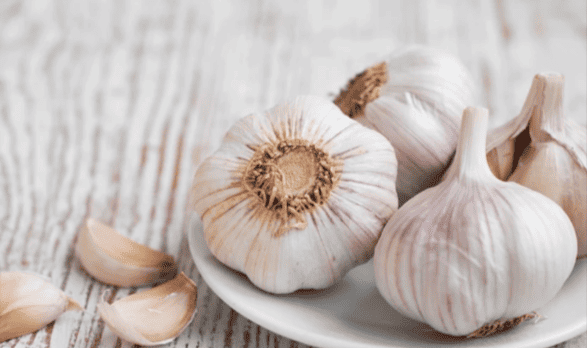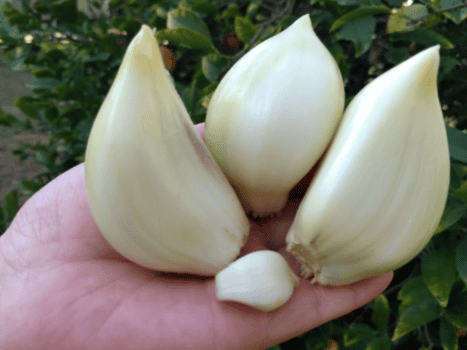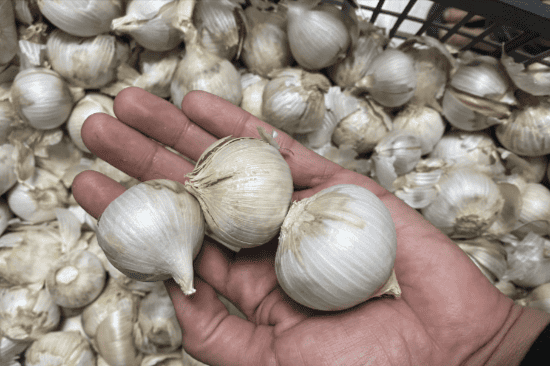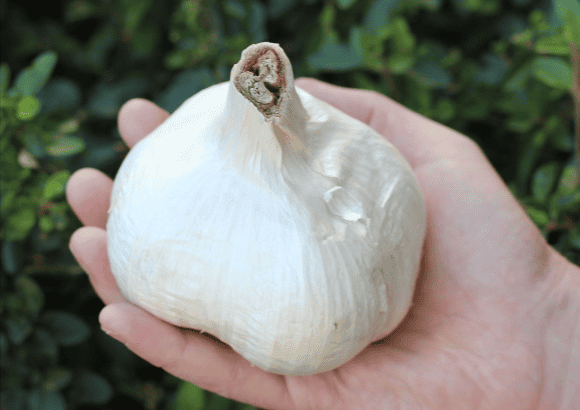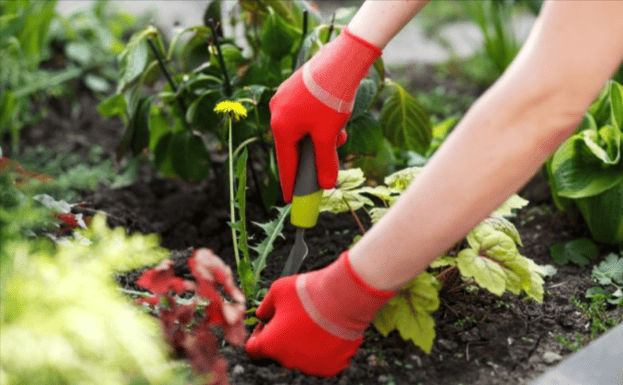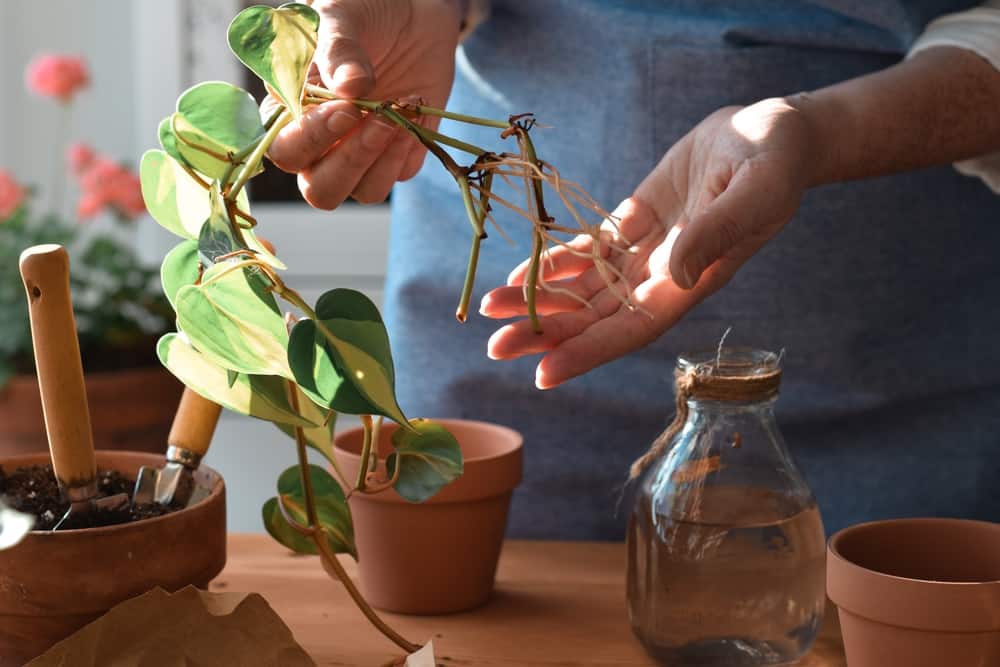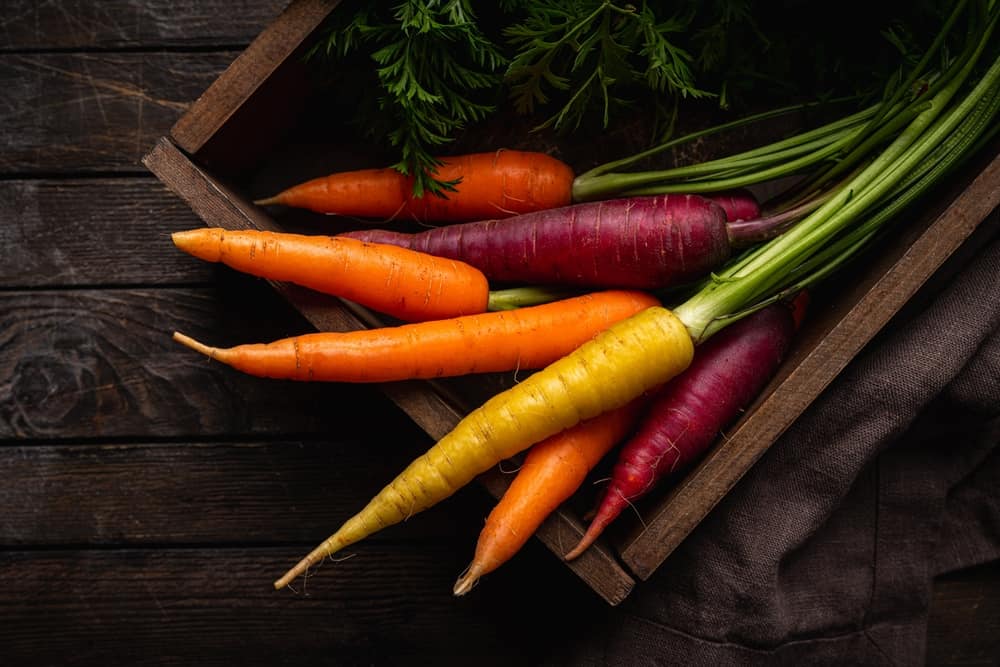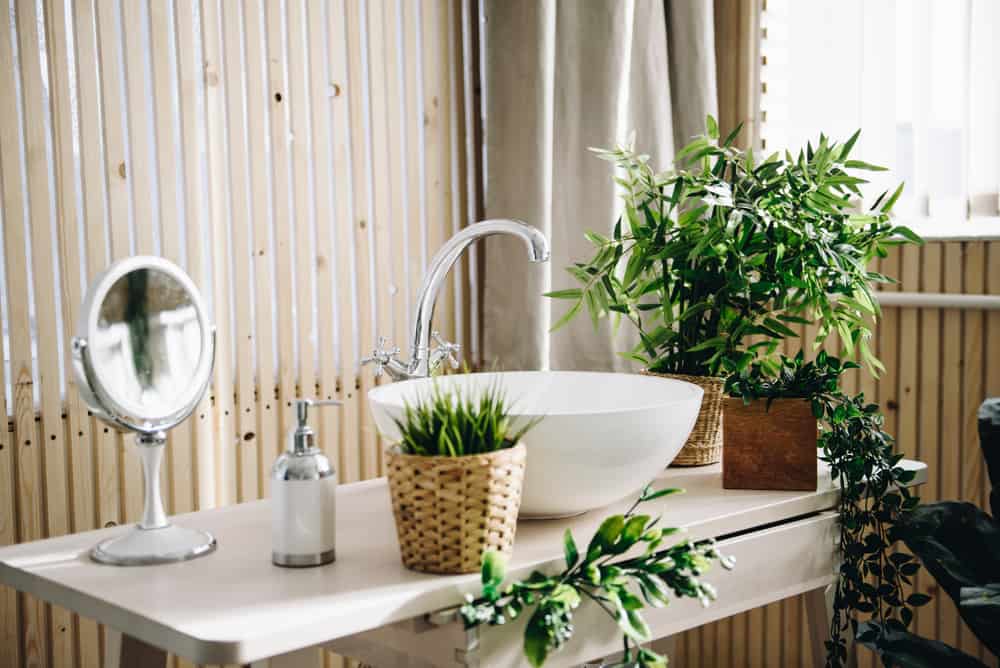Page Contents:
What is Elephant Garlic?
Elephant garlic (Allium ampeloprasum var. ampeloprasum) is a large bulbous plant closely related to common garlic.
Despite the name, it is actually a variant of the leek species. It produces big, round bulbs that can be several inches in diameter and have a sweeter and milder garlic flavor compared to regular garlic.
This type of garlic is commonly used in cooking, particularly in recipes that call for a more subtle garlic taste. It is often roasted, sautéed, or used raw in salads and dressings.
Nutritious and easy to grow, elephant garlic offers a unique twist to traditional garlic dishes and adds a delightful touch to various culinary creations.
Elephant Garlic vs. Regular Garlic
Elephant garlic and regular garlic have several key differences:
Bulb Size: The most noticeable difference between the two is the bulb size. Elephant garlic produces much larger bulbs, which can be several inches in diameter and weigh several ounces or more, whereas regular garlic bulbs are typically smaller, ranging from about ½ inch to a full inch in diameter.
Flavor: Elephant garlic has a milder and sweeter flavor compared to regular garlic. While it still retains some garlic taste, it is less pungent and has a more subtle garlic flavor profile. Regular garlic, on the other hand, is known for its strong and distinct flavor that we all know well.
Clove Size: Inside the bulb, elephant garlic contains fewer but larger cloves compared to regular garlic which usually consists of several smaller cloves.
Culinary Use: Due to its milder flavor, elephant garlic is often used in recipes where a more delicate garlic taste is desired. It is frequently used in roasts, sautés, and raw in salads and dressings. Regular garlic, with its stronger flavor, is commonly used in dishes to add depth and intensity to the flavor profile.
Botanical Classification: While both belong to the Allium family, they are different species. Elephant garlic is Allium ampeloprasum var. ampeloprasum, a variant of leek species, and regular garlic is Allium sativum.
How to Grow Elephant Garlic? (Step by Step)
Here are the 10 steps to properly growing elephant garlic:
1. Select Suitable Planting Location: Choose a sunny spot in your garden with well-draining soil. Elephant garlic prefers full sunlight to thrive.
2. Prepare the Soil: Loosen the soil to a depth of about 8-12 inches (20-30 cm) and remove any weeds or debris. Adding organic compost can improve soil fertility and drainage.
3. Purchase Quality Bulbs: Purchase healthy elephant garlic bulbs from a reputable nursery or garden center. The bulbs should be firm and free from any signs of disease.
Keep in mind the planting time – The garlic bulbs in the fall, ideally about 4-6 weeks before the first expected frost. This allows the bulbs to establish their roots before winter.
4. Plant at the proper depth: Plant the bulbs with the flat side down, about 2-4 inches deep in the soil, and space them around 6-8 inches apart in rows. The larger bulbs should be planted deeper.
5. Watering: After planting, water the area thoroughly to ensure good moisture penetration. During the growing season, keep the soil consistently moist but not waterlogged.
6. Mulching: Apply a layer of organic mulch (straw or dried leaves) around the plants to help retain soil moisture, suppress weeds, and protect the bulbs from extreme temperature fluctuations.
7. Apply Fertilization: Elephant garlic benefits from fertilization. You can use a balanced fertilizer or add compost during the growing season to provide essential nutrients.
8. Don’t Forgot to Weed: Regularly remove weeds around the garlic plants to reduce competition for nutrients and water.
9. Harvesting: Elephant garlic is typically ready for harvest in late spring or early summer when the leaves start to turn yellow and die back. Carefully dig up the bulbs using a garden fork or shovel, being careful not to damage them.
10. Cure Properly: Once harvested, let the bulbs cure for about 2-3 weeks in a warm, dry, and well-ventilated place. This helps improve their flavor and storage life.
Make sure to store the elephant garlic bulbs in a cool, dry, and well-ventilated location. They can last for several months under proper storage conditions.
Where to Buy Elephant Garlic
Elephant garlic can be purchased from various sources, including:
Nurseries and Garden Centers: Many nurseries and garden centers carry elephant garlic bulbs, especially during the fall planting season.
Online Retailers: Numerous online retailers and garden supply websites offer elephant garlic bulbs for purchase. You can find a wide selection and have them delivered to your doorstep.
Local Farmers’ Markets: Some farmers’ markets may sell elephant garlic bulbs during the appropriate planting season, and you can buy them directly from local growers.
Seed Catalogs: Specialty seed catalogs often feature elephant garlic bulbs for sale, along with other unique and heirloom varieties.
Farm Supply Stores: Certain farm supply stores or agricultural cooperatives may carry elephant garlic bulbs in their gardening section.
When purchasing elephant garlic, look for healthy, firm bulbs without any signs of disease or damage.
It’s a good idea to buy from reputable sources to ensure the quality of the bulbs and increase your chances of successful growth.
